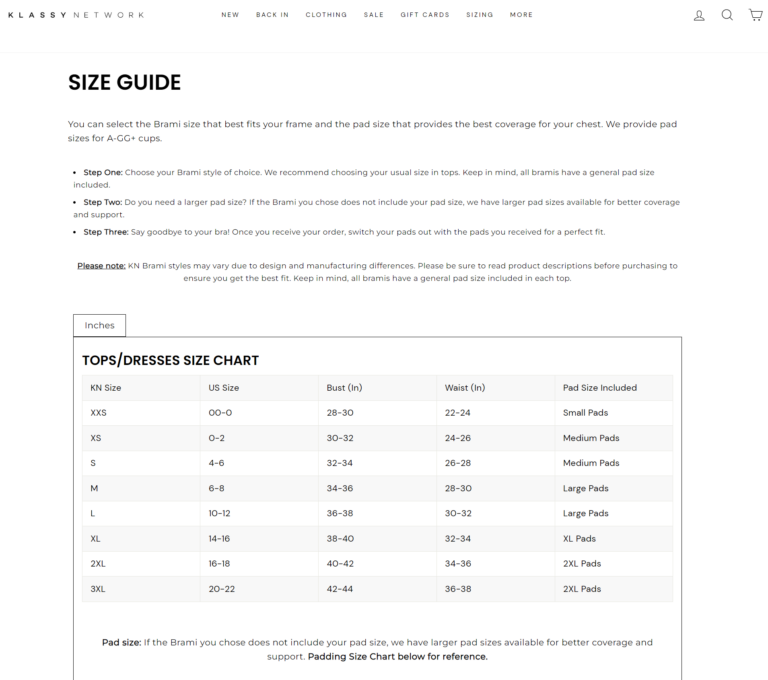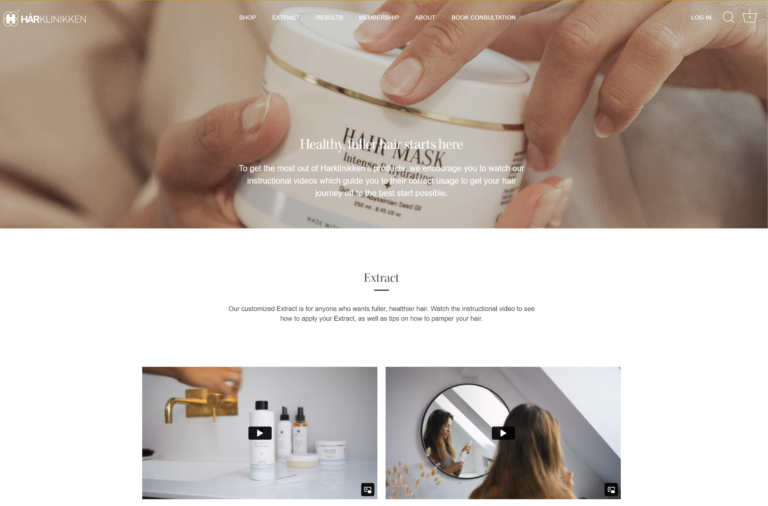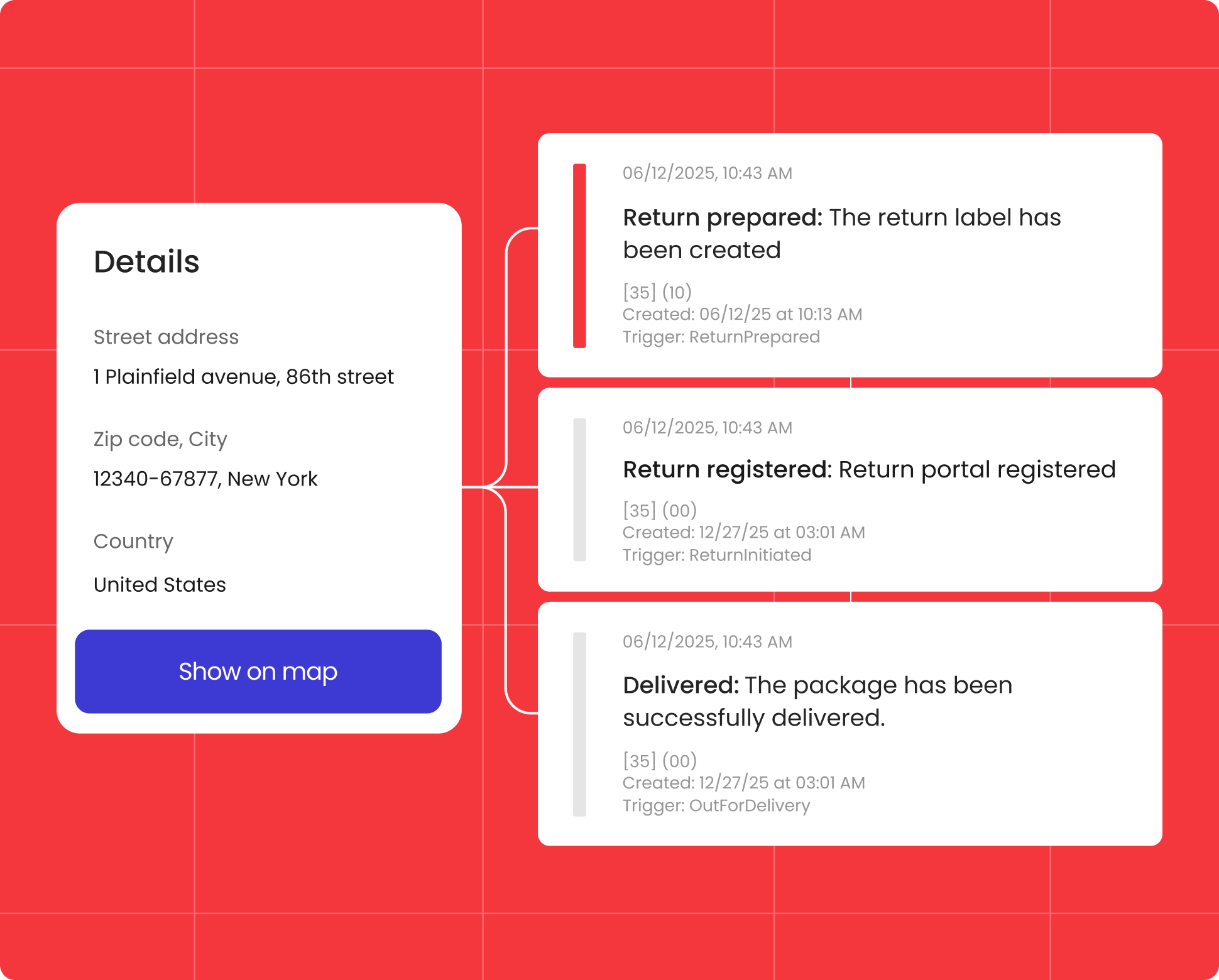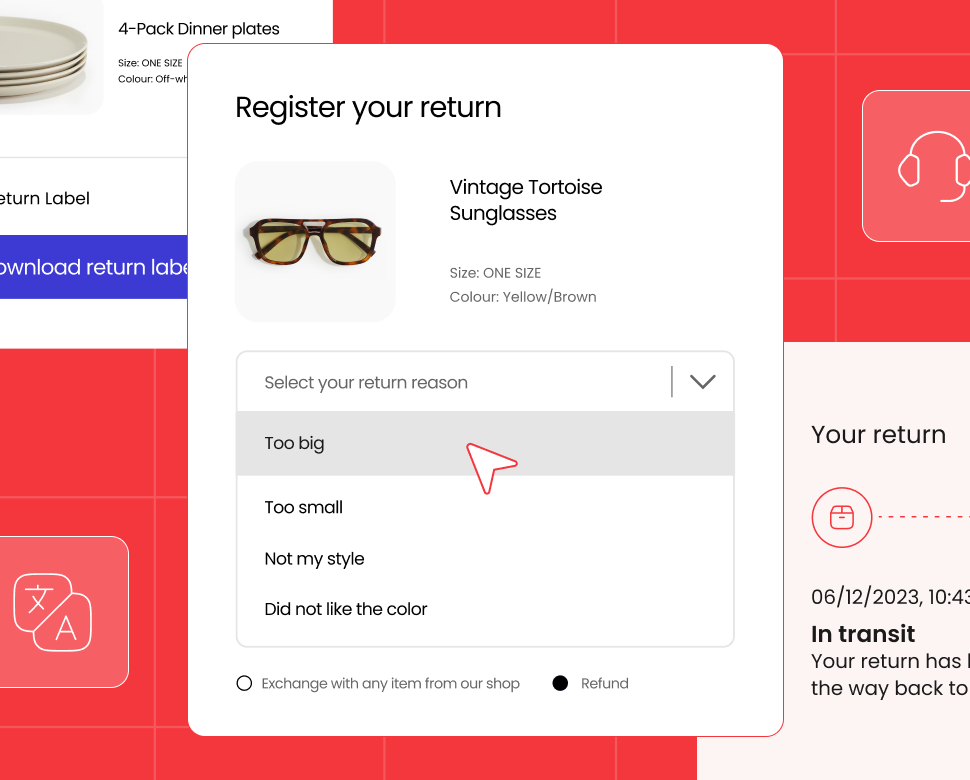How to Reduce Your Return Rate: 11 Tips For Fewer Returns

Contents
- 1. Design a fair policy on how to handle ecommerce returns
- 2. Use customer service to address concerns
- 3. Improve product descriptions and imagery
- 4. Simplify the checkout process
- 5. Provide detailed sizing information
- 6. Avoid shipping out damaged or defective products
- 7. Offer virtual try-on options
- 8. Educate customers on how to set up and use products
- 9. Offer incentives to keep products
- 10. Collect and analyze feedback to determine your challenges with return rates
- 11. Utilize ecommerce returns solutions
- Final thoughts on ecommerce return management
Unfortunately, customer expectations for a hassle-free returns process have made it difficult for brands to restrict them without increasing cart abandonment. In fact, that 92% of shoppers say that a retailer’s return policy influences their buying decision, and 62% indicated they’re unlikely to continue shopping with a brand that offers a poor returns experience.
So, how do you reduce returns without harming customer loyalty?
The answer is to maintain a generous return policy while to streamline the customer experience online. In this article, we’re going to cover a handful of strategies on how to reduce returns in ecommerce and strengthen your bottom line.
1. Design a fair policy on how to handle ecommerce returns
A consistent returns policy is the first step to reducing ecommerce returns at the source. It’s essential to strike a balance between fairness and preventing the return of merchandise that cannot be resold. Common exclusions include:
| Product Type | Reasons for Prohibiting Returns |
|---|---|
| Products on final clearance | Products on final clearance are heavily discounted. Not allowing returns for these products ensures customers are aware of the final sale. |
| Products without original packaging/tags | Products without original packaging or tags may not be resellable as new and may be difficult to verify for authenticity, quality, and condition. |
| Products that can't be returned for hygiene reasons (e.g. swimwear) | Hygiene-related products, such as swimwear, undergarments, and personal care items, may pose health risks if returned and resold. |
| Products that are custom made | These products are made to order and designed to meet specific customer requirements. They may be difficult or impossible to resell to another customer, as they are not designed to fit standard sizes or specifications. |
Also, ensure that your returns policy is clearly written and accessible from multiple places on your website, such as the footer or at the checkout.
2. Use customer service to address concerns
When brands ask themselves how to reduce returns, customer service is one of the best places to start. If people are having issues with their purchase not working or not being suitable for their needs, your customer service channels will be their first port of call. How your team is trained to respond in these situations can be the difference between retaining a sale or losing one.
For example, if a customer reaches out wanting to return an item because it’s the wrong size, this is an opportunity for an agent to suggest exchanging it for the correct size. As well as retaining revenue, this also helps to build customer loyalty through attentive service.
3. Improve product descriptions and imagery
Online shoppers must often rely on images and descriptions to decide whether a product is right to purchase. If your images and descriptions are inaccurate or poor quality, this increases the likelihood of customers wanting to return products.
As such, your product descriptions and photos should work together to give customers as much information as possible. For example, if you’ve included an image of a model wearing a blouse, consider adding underneath what size the model is wearing and how tall they are. Together, the description and imagery make it far easier for the shopper to figure out how the dress will likely look on them.
ASOS does this really well. Its product pages display the model’s height and the size they’re wearing, which gives customers more context about the product’s sizing and fit.

4. Simplify the checkout process
The ecommerce checkout might not appear to have anything to do with returns, but a long and complex checkout process can contribute to your return rate. How? By making customers feel nervous and apprehensive about their purchase.
If the checkout spans multiple pages and provides little information about shipping and delivery, there’s a high chance that a customer might cancel an order before it’s shipped. Ensure your checkout includes information like your return policy, so customers know they won’t be stuck with unwanted merchandise.
5. Provide detailed sizing information
Incorrect sizing is one of the biggest reasons for ecommerce returns. This is because common sizing systems, such as small, medium, and large, differ widely between brands and clothing styles.
The easiest way to avoid these returns is to offer detailed sizing charts that break down each clothing size into specific measurements i.e. waist, bust, or hip. It’s also a good idea to link to an on-site guide that displays your product measurements and offers tips on how customers can select the right size.
We can see a great example of this in action on Klassy Network’s size guide page, which provides detailed tables on its different sizes.

6. Avoid shipping out damaged or defective products
Damaged products don’t just result in returns, they also harm an ecommerce brand’s reputation—and that’s incredibly difficult to repair. If you’re exploring how to reduce customer returns of this type, implement robust quality control measures. Ensure all products are inspected when they arrive in your warehouse to look for defects or damage.
Because damage can also occur during the shipping process, see to it that all orders are packaged securely. Fragile items, such as ceramics or glassware, should have their own packing instructions to prevent disappointment upon arrival.
7. Offer virtual try-on options
Virtual try-on technology has become a powerful tool for ecommerce brands to help customers make better purchasing decisions. Virtual try-on tools use augmented reality filters to allow shoppers to “wear” clothing or cosmetics or “place” items within their homes to assess their suitability rather than relying on photos or sizing guides alone.
Take for instance, Warby Parker, which offers a virtual try-on feature on their website. Customers can use their webcam to see how different glasses frames look on their faces.

Industry data shows that 58% of consumers who use virtual try-on tools believe this prevents them from making a return. By allowing your customers to “try before they buy,” you can reduce returns for reasons like the wrong color or style.
8. Educate customers on how to set up and use products
Products requiring set-up or assembly, such as appliances or electronics, can be returned simply because the customer finds it too difficult to use the product. The same can be true for certain personal care products that require special handling or storage (e.g., Vitamin C serums).
Fortunately, brands have many channels at their disposal to assist customers. Online how-to guides, video tutorials, and packaging inserts are great educational tools to assist customers with getting to grips with their new purchases, decreasing the odds of returns.
Take a cue from the hair care company Harklinikken, which offers detailed instructions and videos on applying and using its products.
Its website has a dedicated section containing instructional videos that walk customers through the process of applying the products, including how much to use, how to massage it into the scalp, and how long to leave it on. Harklinikken also provides detailed written instructions on its product pages and emails, including tips and tricks for getting the best results.

9. Offer incentives to keep products
Using a combination of incentives and deterrents is a great long-term strategy to reduce return rates. If free returns are on offer, shoppers can be less discerning when purchasing, compared to when there is a restocking fee.
However, simply penalizing your customer could result in higher cart abandonment. Instead, consider offering incentives for customers to hold onto merchandise. For example, you could offer to cover return shipping if a customer is willing to exchange a product. Other incentives to encourage exchanges include offering longer return windows or extra VIP loyalty points.
10. Collect and analyze feedback to determine your challenges with return rates
By asking customers why they are returning products, you can identify recurring issues that are inflating your ecommerce return rate. One of the best ways of doing this is to ask customers for their reason for returning a product during the return process. You can also add a review section to each product page for shoppers to provide feedback independently.
11. Utilize ecommerce returns solutions

Many of the tips mentioned above can be streamlined and enhanced using a post-purchase platform with built-in ecommerce returns solutions. parcelLab, for example, provides a centralized platform for managing the returns process.
The platform lets you build a customizable that empowers shoppers to initiate and track returns on your end.
In addition, parcelLab’s data and analytics features enable you to gain a deeper understanding of why customers are returning items and identify effective solutions to improve the returns process.
Final thoughts on ecommerce return management
Managing returns is a fact of doing business in ecommerce, but your brand can take steps to reduce them.
At parcelLab, we help you improve the returns experience with our robust post-purchase software that lets you decrease operational costs and optimize the customer experience. Book a demo and discover how parcelLab can streamline and enhance your post-purchase initiatives.
Read all of the Returns Management Playbook Chapters:
- Chapter 1 – What is Returns Management?
- Chapter 2 – Returns Management: Challenges and Best Practices
- Chapter 3 – How to Reduce Your Return Rate: 11 Tips For Fewer Returns you are here
- Chapter 4 – What is Self-Service Return? read next chapter
- Chapter 5 – Guide to Retail Returns Management
- Chapter 6 – The Best Return Management Software
- Chapter 7 – The Best Return Management Software
- Chapter 8 – The Complete Guide to Retail Returns Marketing



